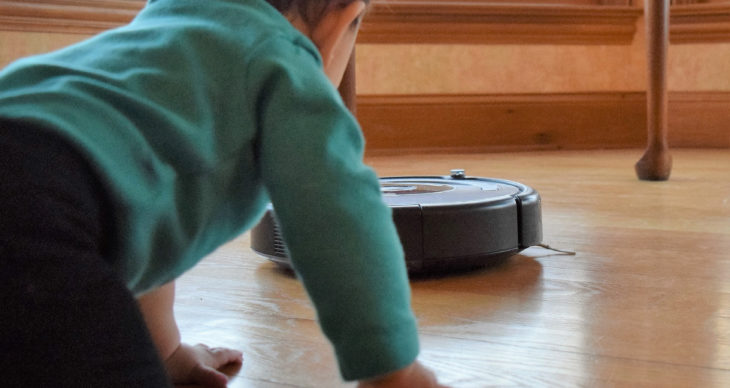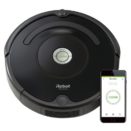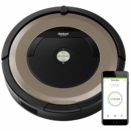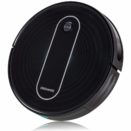Robot vacuums have been around for years; however, it never ceases to amaze people. While the concept of robot vacuums are simple, it’s still an object that brings curiosity out of people. (Jump to our best robot vacuums list)
You often hear things like, “I wish I had one!” or “How much does it cost?” These smart devices make people fuss over them, whether it may be because of fascination or envy.
Dozens of questions will pop out of everyone’s mouth, but only one question is worth pondering: “Are robot vacuums worth it?”
Sure, robot vacuums definitely bring in the cool points for any home, but what’s the catch? Let’s explore the pros and cons of owning a robot vacuum!
How Do Robot Vacuums Clean?
Robot Vacuums are smart little devices that automatically size up your home. The vacuum has built-in laser technology, advanced sensor detectors, and camera, allowing it to map out your home’s floor space.
Its nifty features ensure it won’t bump into any furniture. Instead, it cleans under your upholstery as long as it’s given enough space to get below it. Most robotic vacuums are at least 3-4 inches in height.
If you want to make sure your robot vacuums are cleaning the right areas of your home, get a Wi-Fi abled device, so you can track it using an app.
The device’s suction intensities change from one surface to another. It adjusts its level depending on the floor surroundings. However, robot vacuums are recommended for homes with hardwood floor as it’s likely to get caught on rugs.
Dirt and dust bunnies are sucked up with the vacuum’s roller and its side brushes, this makes sure no dirt is left out of corners.
There are specific models, like Samsung’s POWERbot, that come with a neat extendable arm, making it possible to suck crumbs on walls.
While robot vacuums may have trouble with rugs, these devices do well on short carpets. It can collect bigger debris and dog fur. Naturally, the traditional vacuum cleaner delivers better results, but it gets the job done.
It’s a different story for longer fibers, it may tangle the vacuum’s brushes, causing problems in your cleaning schedule. If you decide to use it on longer carpets, it’s best to see through it personally. Don’t leave it running on its own.
Robot vacuums are programmed to move around your home until its vacuum cycle is done. Depending on the model, it may stop when the battery drains out.
Budget models are able to run for at least 70 minutes and high-end models can go up to 130 minutes (almost twice the run time).
Pricier ones would go back to its charging dock on its own while low-end models would run out of juice on the spot.
Where Do Robot Vacuums Shine?
To give you a clear picture of whether these devices are a fit for your lifestyle, we’ve listed down some important factors about them:
- Robot vacuums don’t move in unsystematic patterns, they vacuum in a grid method.
- Compared to traditional vacuums, they’re easier to maintain and clean.
- You can input specific areas where you want them to focus on and decide the number of cycles it does on your floor.
- High-end models return to its charging dock to energize their batteries
- Ideal for jumping from your carpet to hardwood floor without changing its suction power
With these points in mind, we can deduce that robotic vacuums do an amazing job at preventing huge clutters from growing on your home’s hard surfaces.
You can trust these vacuums to efficiently pick up debris, dog fur, and food crumbs. Take advantage of the vacuum’s scheduling feature as it’s a built-in element to these devices.
You’ll definitely love having one in your house if:
- You’re looking for a device that supplements your regular vacuum cleaner
- You want to keep your home neat and tidy on a schedule
- Your home already clean and in ship-shape
- Your area is uncluttered, free of objects on the surface
- You’ll only use it in small areas
- You do well with maintenance
- Your furry companions are well-trained at home
Where Do Robot Vacuums Fall Short?
Sure, robot vacuums are a miracle worker. But what’s the catch? Well, it’s not all sunshine and butterflies for our robotic little friends, these have issues that may lead people to want to pick up the regular-size vacuum more often.
In other words, this isn’t well-suited for people who want to control what exactly needs to be vacuumed. A full-size vacuum requires less maintenance than our compact device.
While these are objects that make your house smarter, it does have a problem with its AI intelligence. Robotic vacuums aren’t able to properly map and navigate on darker floors.
It also has trouble with a variety of furniture placements, leading the machine to be out of place in the house. Your vacuum might end up in an open bedroom or closet.
Robotic vacuums are good enough to remember a furniture’s location, but as soon as you move it do a different spot, it automatically gets lost.
Make sure your area is free from cords, laces, frilly rugs, and the likes. These can be a problem for them, making the objects get stuck or it’ll continue to drag things around the space.
Another concern is its shape. It does give you an edge in portability because of how compact the device is, but this also means the vacuum’s dustbins fill quickly. Most of the devices are round in shape, making cleaning corners difficult.
With all these things pointed out, it’s safe to say, robot vacuums aren’t for you if:
- Your home isn’t always tidy
- Objects are scattered all over the floor
- You own bushy shag rugs
- You’re too busy to do regular maintenance for the machine
- Dogs aren’t housetrained
- Your space has too many obstacles
Final Verdict
Robot vacuums aren’t a perfect match for every home. These devices are a fit for households that are looking for a supplemental cleaning solution. Just keep your traditional vacuum cleaners when you do decide to get one as it doesn’t have enough cleaning power to replace it completely.





